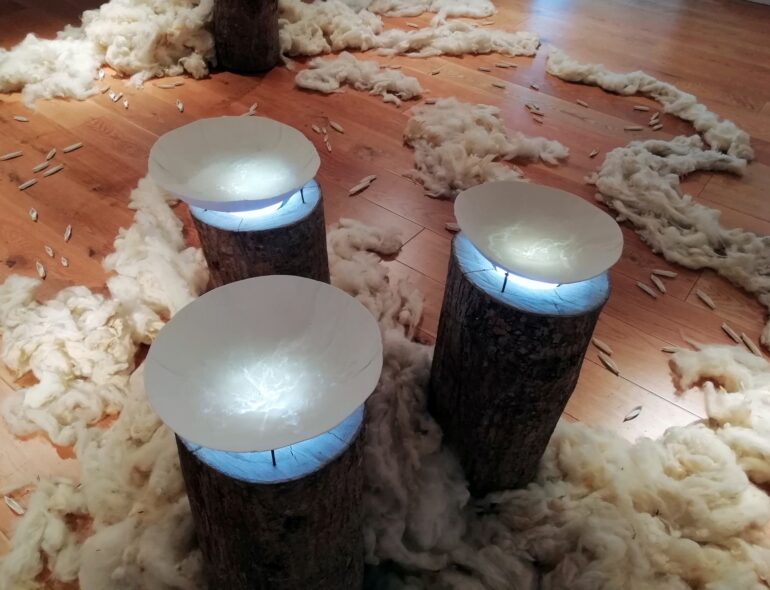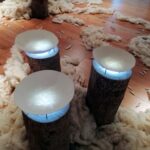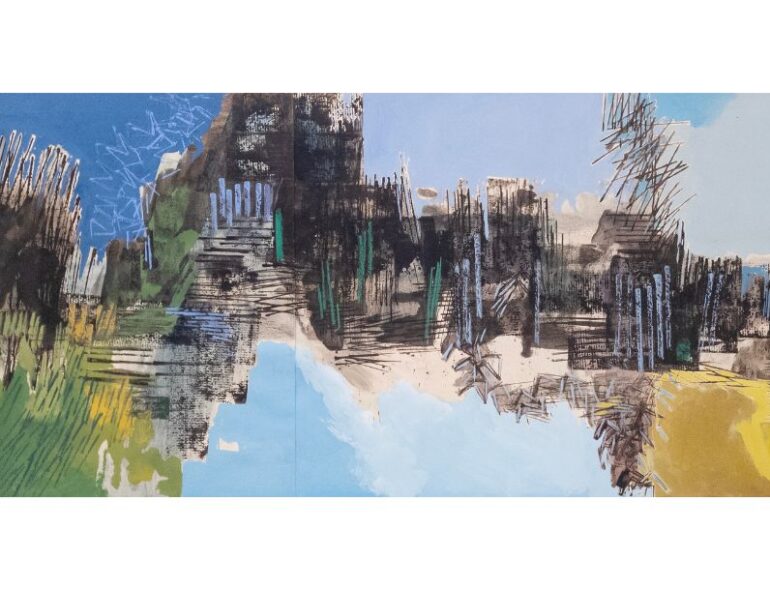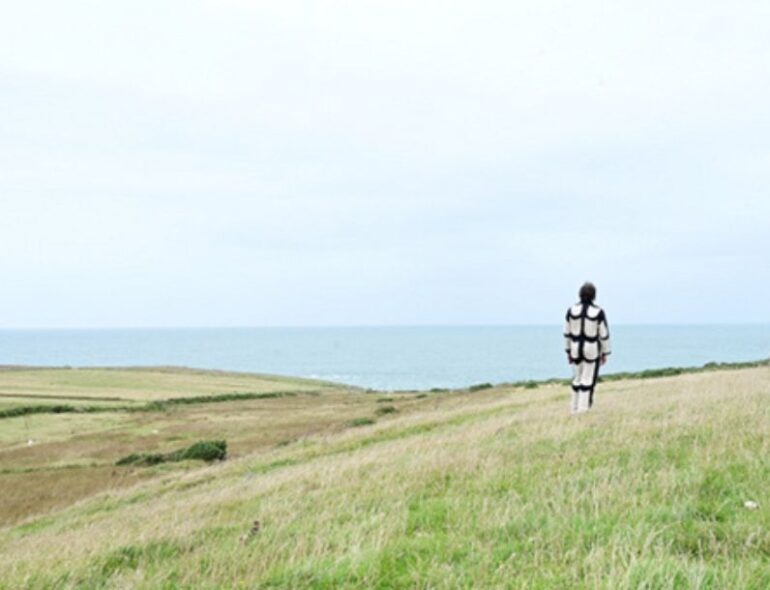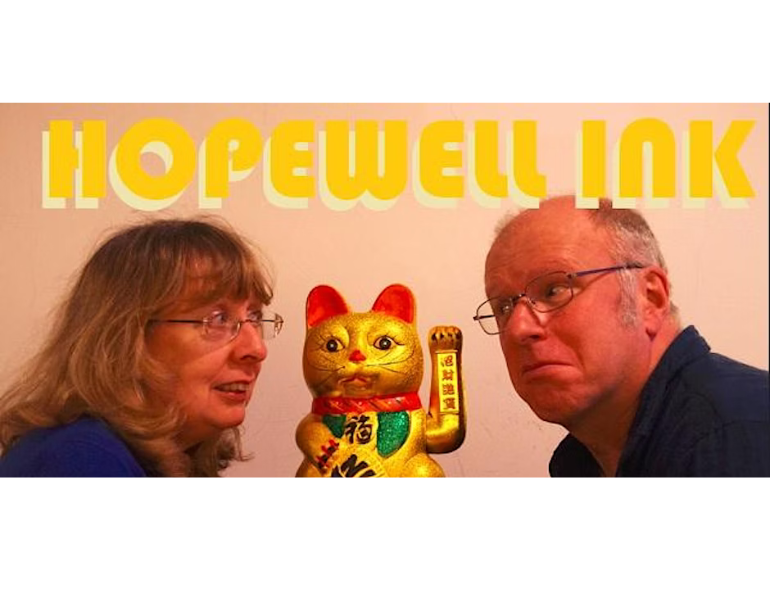The lights are dimmed in this gallery space. Please enter with care and enjoy the contemplative mood.
“In 2019, looking at a current Ordnance Survey map, I noticed that raised areas in the Porthmadog hinterland, behind the Cob, were still referred to as islands. This sparked my imagination as to what the landscape might have looked like before William Maddock completed the Cob in 1811. I realised that Traeth Mawr would then have been a tidal estuary, flooding as far as the Aberglaslyn Bridge. The radical change to this landscape, initiated by Maddock, is captured by Thomas Love Peacock’s words in Headlong Hall (1816).
‘The mountain-frame remains unchanged, unchangeable;
but the liquid mirror it enclosed is gone’.
I was inspired to explore Traeth Mawr, Traeth Bach and the River Dwyryd.
I was particularly drawn to crossing points and bridges, and the jetties that would have been used on the river Dwyryd as part of the slate industry, as well as marks left in the landscape by human hand, by geological features, and by nature. Working with porcelain and latex, I took impressions directly from the landscape – from rock and stone, from bridge and slate – that I could develop into creative pieces.
In 2019 I undertook the main part of the field work with a research and development grant from the Arts Council of Wales. The final work was exhibited in Oriel Brondanw in 2022.
During the intervening years of lockdown, I found the work developing in new directions. I continued to work with porcelain and latex – and I made a coracle. I recalled the vessels plying the river Dwyryd, Cei Tyddyn Isaf and the crossing points of Traeth Mawr, and saw a thematic link emerging from these creative activities. That link was Flow.
Scores of tiny porcelain boats are the key expression of the flow and current of the tidal estuary and are the main feature.
The Tree Stumps supporting larger porcelain vessels echo the forests that have been lost as well as the various ways of crossing the flooded tidal estuary before the Cob was built. These vessels contain embedded images of maps, water and rope – key design elements that are only revealed when light, hidden in the tree stumps, shines through the translucent porcelain.
The original installation at Oriel Brondanw in 2022 spread across 4 rooms. Here I have distilled the essence of Flow into one room. This has become part of the ethos of this body of work: each new venue requiring a new focus and interaction, leading to subtly different interpretations. Key elements remain: – the vessels – the inspiration – and the essence of Flow, ever changing as a tidal estuary – the original inspiration.”
SIAN HUGHES

